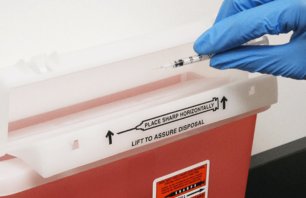When managing regulated medical waste, healthcare organizations often focus on internal processes, including how staff throw away contaminated materials and how frequently waste containers get picked up. Unfortunately, organizations can sometimes lose sight of what happens to waste after it leaves the facility.
As good stewards of the environment, organizations should be aware of medical waste treatment and disposal, checking to be sure their waste management partners are appropriately addressing any requirements. Not only is this the right thing to do from an environmental perspective, if your waste management partner isn’t reliably meeting all applicable standards, it could reflect poorly on you, with negative impacts to your reputation.
There are two primary methods for treating regulated medical waste:
- Autoclaving—this is where waste is subjected to a timed, high-temperature, pressured steaming process to render any infectious agents neutral. The waste is then suitable for being taken to a landfill. In general, items like sharps and bio-contaminated materials are autoclaved, making this the most common form of regulated medical waste treatment.
- Incineration—certain materials like chemotherapeutic waste are incinerated. One result of this treatment method is that the materials cannot leach into the water supply or otherwise contaminate the environment.
A strong medical waste management partner is key to ensuring your medical waste is properly treated after it leaves your facility. Such a partner should be well versed in the state and federal regulations, including those from the Department of Transportation (DOT). The company should fully appreciate the differences between requirements—for example, the mandatory temperatures for autoclaving vary by state. It’s also helpful if your waste management partner has tracking and recordkeeping abilities. Moreover, these tools will allow you to demonstrate compliance should a regulatory authority be interested.
At Stericycle, we offer comprehensive waste management services, including autoclaving and incineration. We help you understand your state’s regulations and set up programs that help ensure compliance. We also engage in robust tracking and recordkeeping. For more information about how Stericycle can be your total waste management partner, contact us at 855-602-6279.

